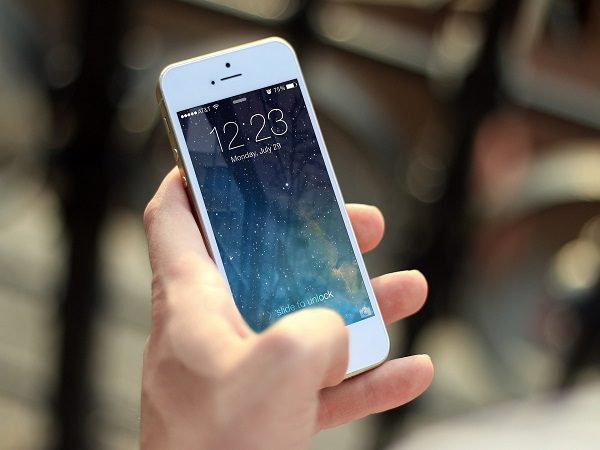iPhone vs. Android: A Detailed Comparison of Operating Systems

Introduction
In the realm of smartphones, two giants stand tall: iPhone and Android. These operating systems have dominated the market for years, each with its own set of features, strengths, and loyal followers. In this comprehensive analysis, we delve deep into the intricacies of iPhone and Android operating systems to help you make an informed decision.
User Interface:
The user interface (UI) is the gateway to a smartphone’s functionality, and both iPhone and Android offer unique experiences. iPhone’s iOS boasts a sleek, minimalist design with intuitive navigation. Its uniformity across devices ensures a seamless user experience. On the other hand, Android provides a more customizable UI, allowing users to personalize their home screens, widgets, and themes to reflect their preferences.
App Ecosystem:
When it comes to the app ecosystem, both platforms have thriving app stores offering millions of applications. Apple’s App Store is renowned for its stringent quality control, ensuring that apps meet strict standards before they are made available to users. This results in a curated selection of high-quality apps, albeit with a longer approval process. Android’s Google Play Store, on the other hand, offers a more open environment, allowing developers greater flexibility in publishing their apps. While this leads to a wider variety of applications, it also increases the risk of encountering malware or low-quality apps.
Integration:
Integration with other devices and services is a key aspect of modern smartphones. iPhone excels in this regard with its seamless integration with other Apple products such as MacBooks, iPads, and Apple Watch. The ecosystem is further enhanced by services like iCloud, which allows for effortless syncing of data across devices. Android, on the other hand, offers greater compatibility with third-party devices and services, thanks to its open-source nature. Google’s suite of services, including Gmail, Google Drive, and Google Photos, seamlessly integrates with Android devices, offering users a cohesive digital experience.
Security:
Security is paramount in today’s digital age, and both iPhone and Android prioritize protecting user data. iPhone’s closed ecosystem and stringent security measures make it less vulnerable to malware and cyber threats. Regular security updates and the use of biometric authentication, such as Face ID and Touch ID, add layers of protection to iOS devices. Android, while inherently more susceptible to malware due to its open-source nature, has made significant strides in enhancing security. Features like Google Play Protect and regular security patches mitigate the risk of malware infections, while biometric authentication options like fingerprint scanners and facial recognition provide additional security layers.
Customization:
One of the defining features of Android is its high level of customization. From changing launchers to installing custom ROMs, Android users have unparalleled freedom to tailor their devices to their liking. This flexibility extends to hardware as well, with Android devices offering a wide range of form factors, screen sizes, and specifications to suit diverse preferences. In contrast, iPhone offers limited customization options, with users restricted to pre-set configurations and themes. While this may be seen as a drawback by some, it ensures a consistent user experience across all iOS devices.
Updates:
Timely software updates are crucial for ensuring optimal performance and security of smartphones. iPhone users benefit from Apple’s regular iOS updates, which are rolled out simultaneously across all supported devices. This ensures that users receive the latest features and security patches promptly, regardless of their device model or carrier. Android updates, however, are often subject to delays due to fragmentation across different devices and manufacturers. While flagship Android devices typically receive timely updates, mid-range and budget devices may experience longer wait times or even miss out on updates altogether.
Performance:
Performance is where iPhone truly shines, thanks to its tightly integrated hardware and software optimization. iPhones consistently deliver smooth and responsive performance, even with intensive tasks such as gaming and multitasking. Apple’s custom-designed chips, such as the A-series processors, are renowned for their power efficiency and performance capabilities. Android devices, while offering a wide range of hardware options, may suffer from performance inconsistencies due to differences in hardware components and software optimization. However, flagship Android devices equipped with high-end processors and ample RAM can rival iPhones in terms of performance.
Price:
Price is often a deciding factor for consumers when choosing between iPhone and Android devices. iPhones are generally more expensive upfront, with flagship models commanding premium prices. However, Apple’s strong resale value and longer software support translate to lower total ownership costs over time. Android devices, on the other hand, cater to a broader range of budgets, with options available across various price points. While budget-friendly Android devices may compromise on certain features or build quality, they offer a cost-effective alternative for budget-conscious consumers.
Conclusion:
In conclusion, the choice between iPhone and Android ultimately boils down to personal preference and priorities. iPhone offers a seamless user experience, robust security, and consistent performance at a premium price point. Android, on the other hand, provides greater customization, flexibility, and affordability, albeit with some trade-offs in terms of security and software updates. Whether you prioritize design, ecosystem integration, or budget considerations, both platforms have something unique to offer. By weighing the pros and cons outlined in this comparative analysis, you can make an informed decision that aligns with your needs and preferences.





